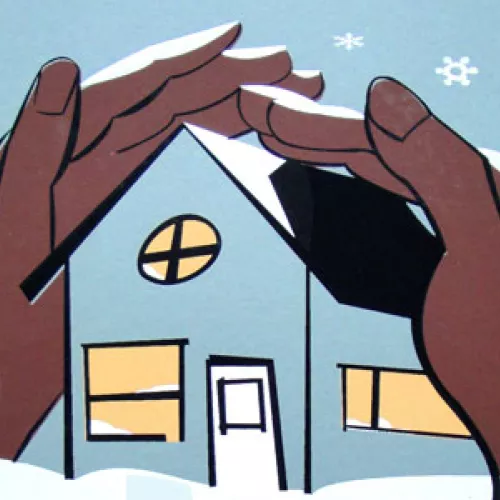We’re pretty sure that winter is here, even if it’s been a bit hesitant. As the temperature drops and we turn on our heat, there are many things we can do to keep the warm air in and our heating bills down.
The following no-cost and low-cost tips will help Minnesotans save energy, reduce utility bills, and keep their homes safe this heating season.
Energy-saving tips:
- Set your thermostat low; use a programmable thermostat. Set your thermostat as low as is comfortable when you are at home. Turn down the temperature about 10 degrees—manually or via programmable thermostat—at night when you go to bed and when you’re not at home. This can reduce your heating bill by 10 percent or more.
- Weather strip and caulk windows and doors to reduce air infiltration.
- Cover drafty windows with tightly sealed plastic to keep the warm air in.
- Open curtains and blinds on south-facing windows to let the sun in during the day to naturally heat your home. Close them at night to reduce the chill from cold windows.
- Seal air leaks around chimneys, vents, pipes, and wires to prevent cold air infiltration. Plugging air leaks (pages 6-12) is one of the most cost-effective ways to conserve energy and increase comfort—and is the key to preventing ice dams (page 8).
- Close your fireplace damper when a fire is not in use and install airtight doors to prevent warm air from escaping. If the fireplace is no longer used, seal the flue with an inflatable plug.
- Maintain your heating system. Have your furnace or boiler inspected annually to ensure maximum efficiency and safety. Consider replacing mechanical systems if they’re old or inefficient, and clean or replace furnace filters regularly as needed. For wood and pellet-burning heaters, clean the flue vent and the inside of the appliance to improve efficiency.
- Turn down the temperature of your water heater to 120 degrees F to save energy and reduce the chances of scalds.
- Take short showers —with low-flow showerheads—instead of baths to reduce hot water use.
- Use light-emitting diode (LED) holiday light strings to reduce the expense of decorating your home for the holidays.
- Look for the ENERGY STAR® label when purchasing new household products. ENERGY STAR signifies strict energy efficiency and reliability guidelines set by the Environmental Protection Agency and the U.S. Department of Energy (DOE).
- Request an energy audit through your electric or gas utility or from nonprofit energy groups.
- Recycle old holidays lights and replace them with LEDs. Hundreds of drop-off sites across Minnesota accept old bulbs, and new LED holiday lights save lots of energy and last longer. Click here to learn more.
For more energy-saving tips, check out the Minnesota Department of Commerce’s Home Energy Guide and the DOE’s Energy Saver webpages.
 |
The Get Answers series on the Energy Stories Blog offers useful tips from CERTs and our partners to help you get to the bottom of your energy efficiency and renewable energy questions. Click here to see more stories in the series >> |


